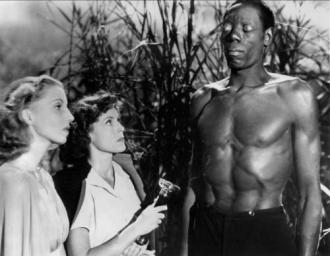 In the U.S. the legends of zombies grew out of the cultures created by African slavery and colonialism in the Caribbean. Folklore experts have traced the idea of zombi back to the Vodoun practices in Haiti, where stories about people being brought back from the dead have been passed down over the decades. Sometimes these zombis are under the control of a master, and sometimes they simply wander mindlessly.
In the U.S. the legends of zombies grew out of the cultures created by African slavery and colonialism in the Caribbean. Folklore experts have traced the idea of zombi back to the Vodoun practices in Haiti, where stories about people being brought back from the dead have been passed down over the decades. Sometimes these zombis are under the control of a master, and sometimes they simply wander mindlessly.
However in modern American pop-culture Zombies have taken on a different persona often being a reflection of societal ills. The first appearance of the “American Zombie” was probably 1932 when Bela Lugosi starred in White Zombie, a film about a white slave owning colonialist in Haiti whose sugar mills are run entirely by zombies. It was the first time that zombies became uniquely and distinctly American. These zombies are instantly recognizable and instantly connected with slave labor and African-Caribbean culture.
This connection would persist into the 1940’s with the masterpiece I Walked With A Zombie, in which race and sexuality are explored. Here a white nurse arrives on the island of St. Sebastian to care for the zombified wife of plantation owner. Without spoiling too much the film shows a white man using Voodoo traditions of the local people to work on a plantation.
Other often over looked works include Revolt of the Zombies and King of the Zombies and in both films zombies are firmly rooted in slave culture and the comparison should be obvious. The zombies are how the plantation owners viewed their slaves–sub-human. Much has been written on the colonial powers equating the citizens of their African colonies as being more savage and animalistic. Luckily times have changed and progressed but the zombie lore has persisted and grown with us.
The 1960’s saw Night of the Living Dead as an allegory for Civil Rights and featured a black protagonist battle hordes of white zombies. In the end the black hero saves the day only to be killed in the final scene very akin to the lynchings of the 1960’s.
After the Civil Rights movement zombies became more interested in consumption–and not just brains. In the 1970’s Dawn of the Dead takes place in shopping mall and this time the genre tackles consumerism. The dead are confused so they return to a place that was important to them in life–a place of consumerism. The zombies are still hungry for brains, but also new Gap jeans.
Zombies and their place in pop culture won’t die because you can’t escape the past. Zombies are the like memories that we’ve tried to stash away and forget but keep resurfacing. Furthermore, it’s not just your memory it’s a mass memory of loss, like a horde. It makes sense that the millennial generation would be so enthralled with zombie lore. Studies show that this generation feels that things are getting worse. That they will not enjoy the comforts that their parents had and they may not be wrong. This is a generation tasked with fixing global warming, born into 9-11 and coming of age in the worst economic downturn in U.S. history. Why not throw zombies into the mix?




